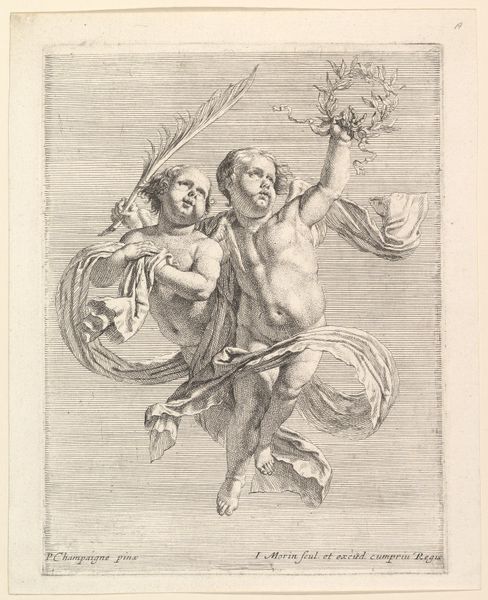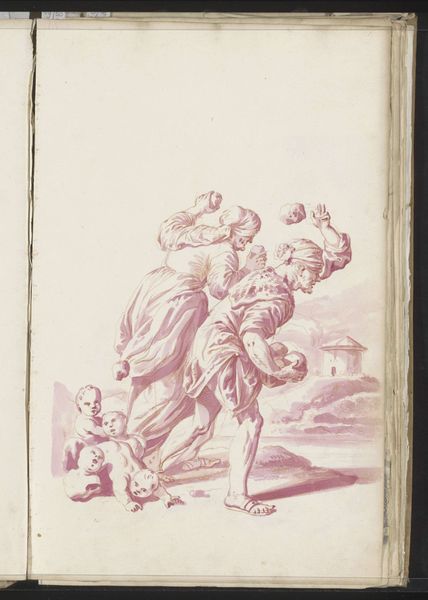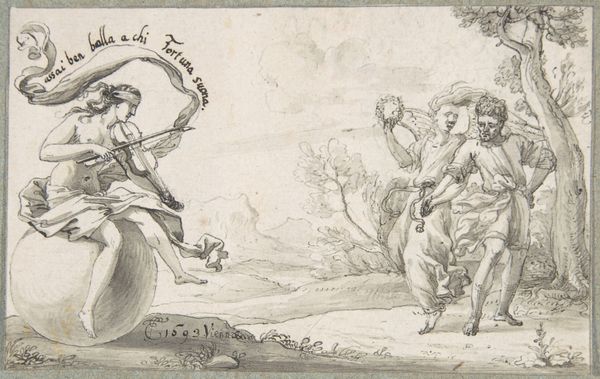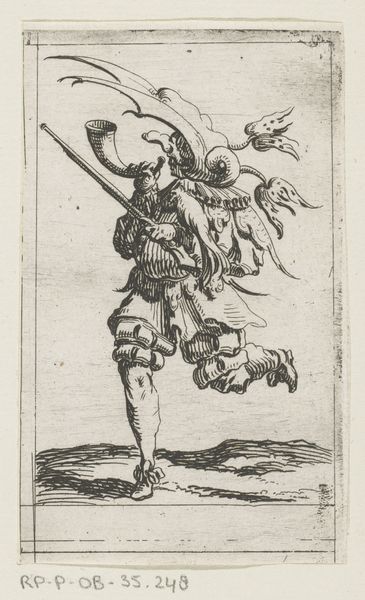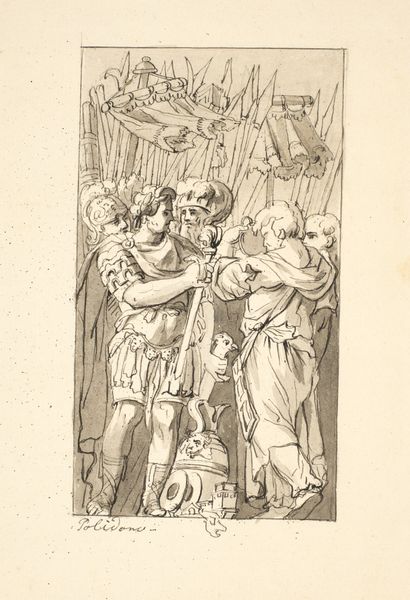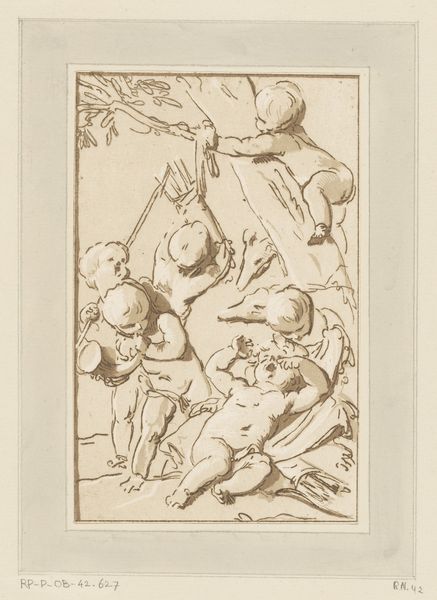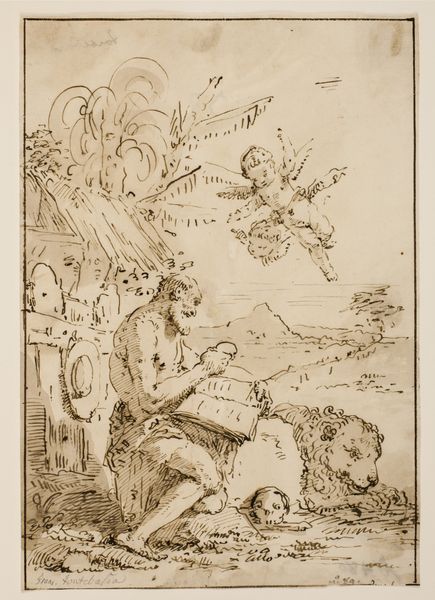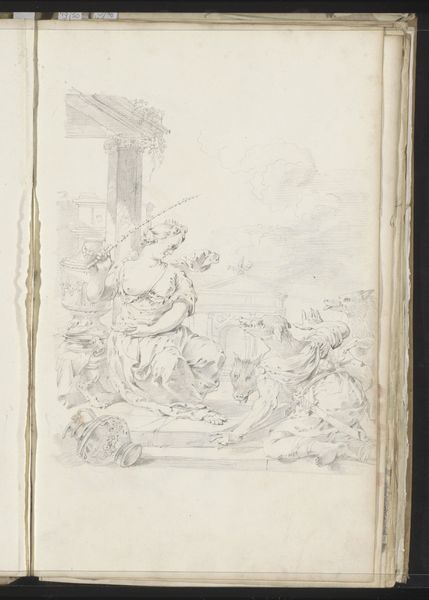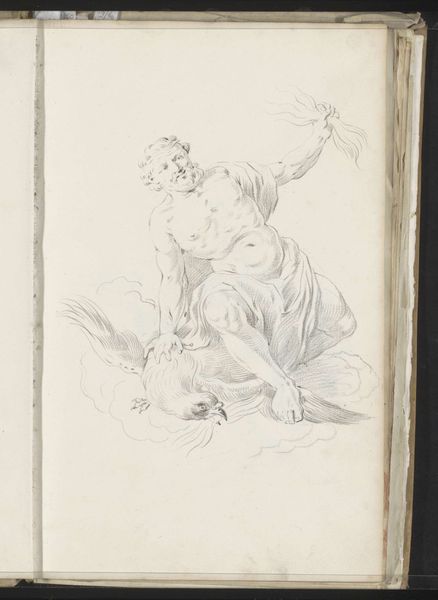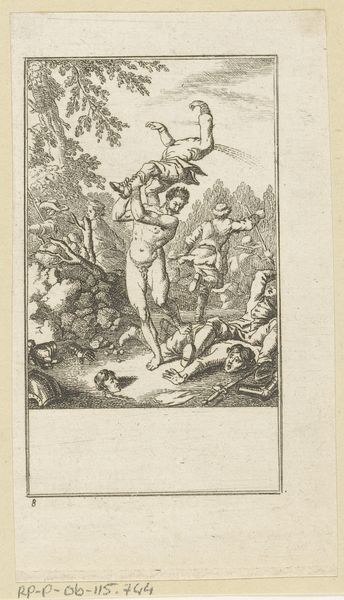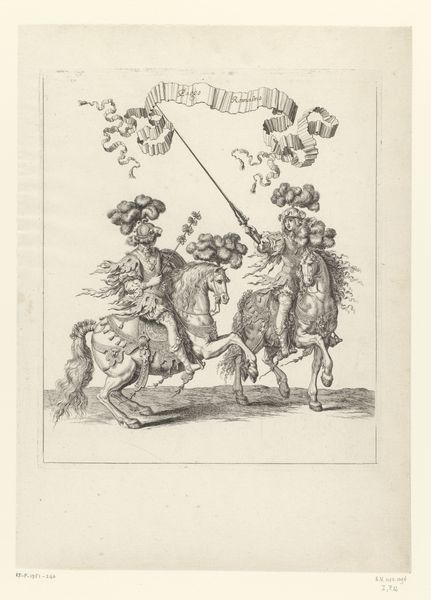
drawing, ink, pen
#
drawing
#
ink drawing
#
allegory
#
baroque
#
pen drawing
#
landscape
#
figuration
#
ink
#
pen
#
academic-art
Copyright: Rijks Museum: Open Domain
Curator: Jacob Toorenvliet's pen and ink drawing, "Cyparissus," dates from around 1701 and showcases a scene brimming with mythological weight. The artist captures the moment just before the tragic transformation, doesn't he? Editor: It certainly possesses a theatrical air! The contrast between the meticulously rendered figures and the more loosely defined landscape creates a rather striking visual hierarchy. Look at the intense verticality created by those flame-like cypresses emerging from the figure at the right. Curator: That tension between precision and looseness speaks to the academic trends of the late Baroque, as artists sought a balance between idealized forms and dynamic expression. Cyparissus himself occupies the left side of the image, you can see that he’s clad in garments that reflect classical antiquity and poised with a slightly theatrical gesture, unintentionally holding out his hand toward the dying stag. It’s terribly poignant. Editor: There’s a fluidity to the line work here that guides the eye – it’s as if the scene is almost choreographed, and I have to wonder if the composition isn’t somehow staged or indebted to another theatrical composition. Curator: Perhaps; the narrative’s source from Ovid's Metamorphoses definitely imbued the artwork with specific cultural meaning for its intended audience. Viewers familiar with Ovid would recognize Cyparissus, the beloved youth who accidentally kills his sacred stag. As punishment and out of grief, he’s transformed into a cypress tree. These trees above the figure signify that transformation about to happen. Editor: That use of a flame-like motif for the cypresses introduces a level of visual complexity – they read at once as flames, as tree forms, and as emanating energy. It draws attention to this otherwise very small element of the piece and invites a lot of questions. I’d argue, then, that this work prompts consideration not only of social mourning or the cultural role of myth-making in art of this period, but also a real appreciation of symbolic languages and the compositional structures artists engage to realize their unique visions. Curator: A fine point to emphasize. The drama embedded in classical tales offered artists opportunities to engage in contemporary conversations about grief, consequence, and even transformation itself. Editor: I concur, understanding those structures allows us a greater capacity for visual literacy today.
Comments
No comments
Be the first to comment and join the conversation on the ultimate creative platform.

